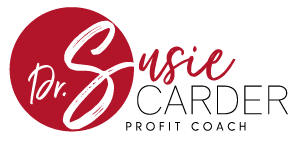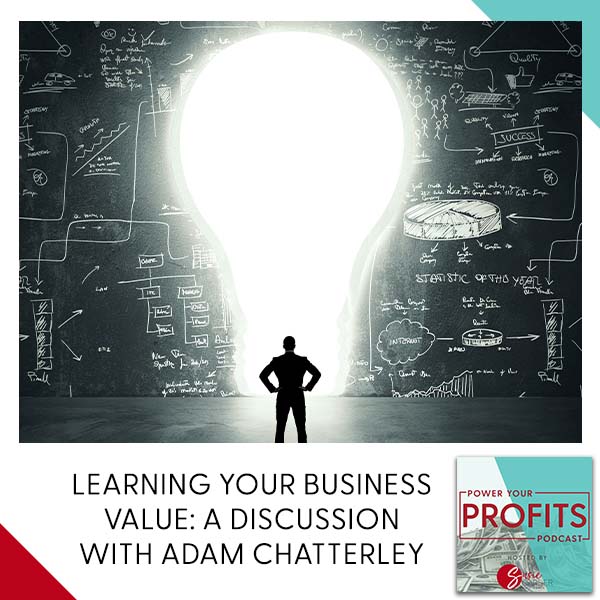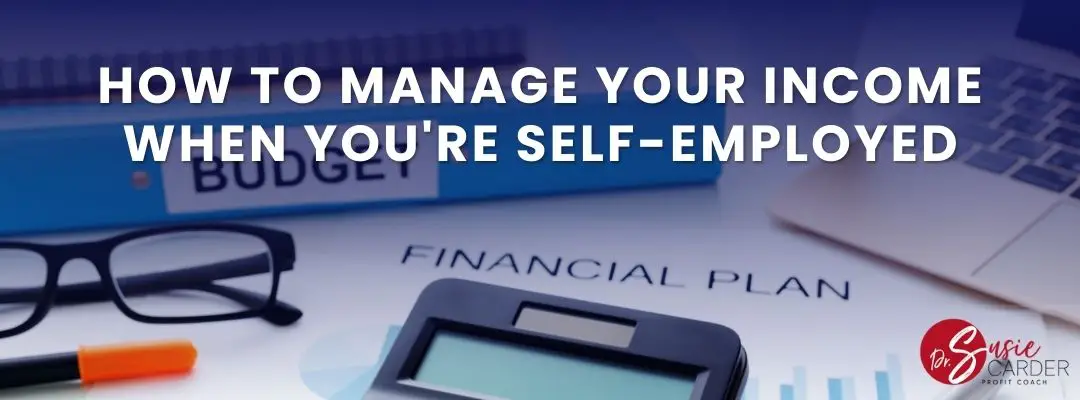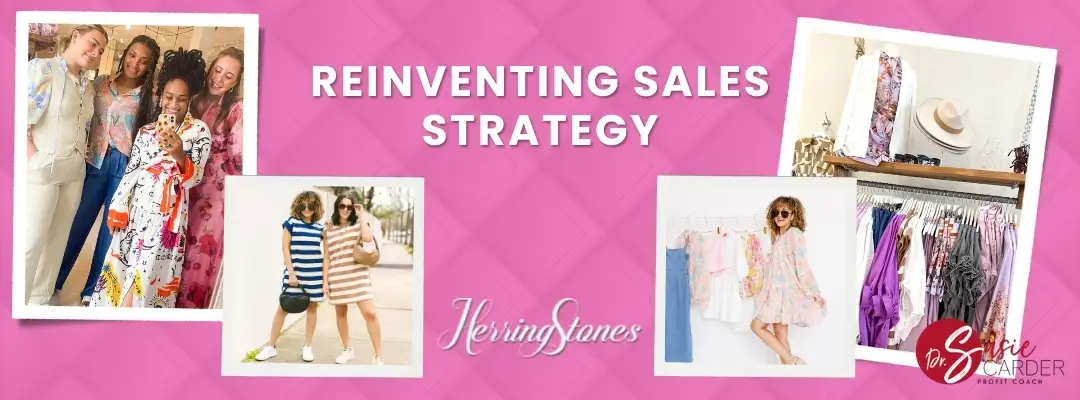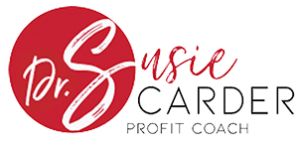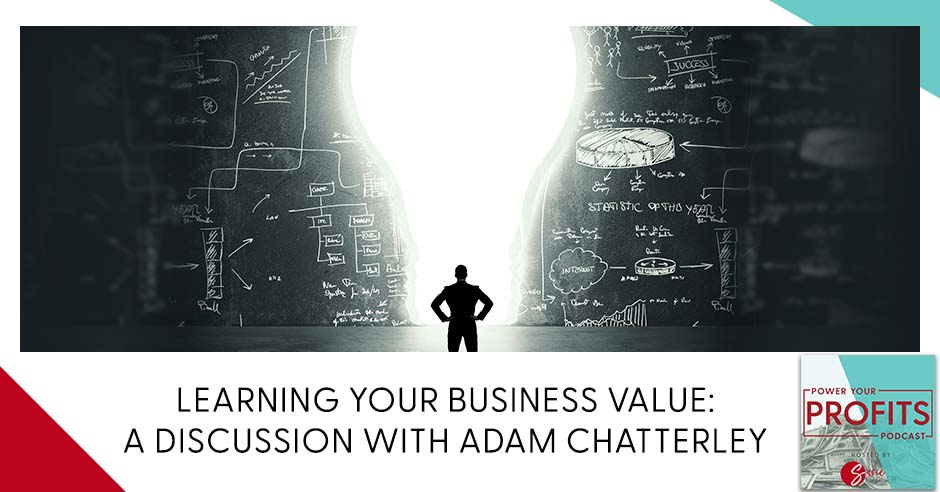
One of the most difficult things for a business is to learn their value and price their products or services accordingly. So how does one learn and develop their business value? We learn about this and more this episode as Susie Carder discusses business with the founder of Beauty Business Secrets, Adam Chatterley. Susie and Adam give their insights on the fundamentals of business, from networking, marketing to having a channel of communication and how to price your business. Learn great business tips from Adam by tuning in.
—
Watch the episode here
Listen to the podcast here
Learning Your Business Value: A Discussion With Adam Chatterley
Our guest is Adam Chatterley. With trying years of working in 27 different countries and 1,000 salons and spas, he has owned, consulted, and supported multiple businesses. He is the Founder of The Beauty Business Podcast and BeautyBusinessSecrets.co. He is also the Chairman of the UK Spa Association. He loves what he does. He loves helping organizations run and turn their beauty business around. He has worked with the biggest names in the industry from Virgin, Orient Express Spa, ESPA, Dermalogica and Elis. He has been there and helped them all.
He lives and breathes the business stuff. He loves it, so he can teach the necessary strategies of what you need to do to be successful, work on the important stuff, and making sure that their business is growing. When he is not hustling or recording a podcast and doing coaching sessions, you can usually find him wrangling with his two opinionated but extremely funny children, ensuring his wife has enough gin in her glass and trying most failingly to stop the cat from sitting on his laptop. Please welcome my guest, Adam.
—
Adam, thank you so much for joining me. I’m so excited to have my clients meet you. What I love is you’re my brother from another mother. Our journey is very similar, helping businesses and entrepreneurs. Your expertise and one of your niches is the beauty industry, which you have done amazingly well. Before we go into that, I want you to tell your badass list. Why should we learn from you? That’s more important that your bio is sexy and amazing. You have done some amazing things, but what’s your genius that you want to share with us?
Thank you very much for asking me to be on the show. I’m hugely appreciative of that. My zone of genius was I started out working in corporate hotels, spas, and wellness, those kinds of things. I had an amazing life. I got to travel around the world. The workers were amazing in brands, stays, and hotels. I had never been able to afford to stay in normally. I realized that what I’m good at is taking complex business problems. I like the stuff that other people hate about business.
Most business owners start up and they are like, “I want to deliver this thing, help people and create this product,” but they don’t like the business stuff. That’s the stuff I like. I realized this when I was working in corporates and thought, “I love helping bigger businesses because, at the end of the day, they pay very well.” I thought, “What I would love to do is take this knowledge and expertise that I have learned from other people. I worked with some amazing people and brought that down to those that are starting out, the independence, the ones who probably need it more than these big companies.”
That’s my zone of genius. It’s taking complex business problems, looking at them, looking at the numbers, and step-by-step defining them. I always talk about, “Have you ever played with Lego?” You get a lot of bits of plastic out of a bag and this picture on the front of a box. Unless you’re in devices, you would never be able to get anywhere near the picture that’s on there, but you get this incredible manual that has no words in it. Simply by putting one brick on top of another, you eventually end up with this thing that you were designing to create.
A business can be like that. As long as you know the steps that you’re doing for the level you’re at, then you can do this. Nowadays, I have split that down into online courses. I have The Beauty Business Podcast, which is an Apple iTunes Top 10 Podcast. I never thought I would have it, which is amazing. I’m helping people all over the world. On any given day, I’ll have a call with someone in Africa, New Zealand, Australia, America and occasionally down the road where I’m in the UK. I love that I get to help people grow their business, particularly in the beauty and wellness industry but all over the world.
I tell you brother from another mother because we use that analogy all the time, the Legos. It’s like, “It doesn’t have to be hard. It has to be strategic.” One of the things you want to talk about is how do you price your stuff. I think about that in every industry. One of our biggest challenges is we pull our pricing out of our butt.
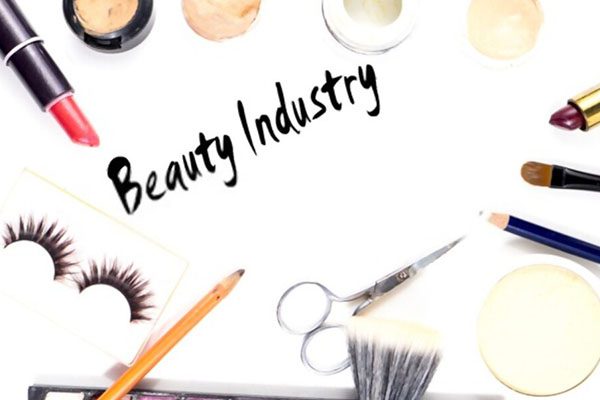
We’re like, “How much does Adam, Susie, Bob, or Stephanie charge?” The reality is that has nothing to do with how we charge because your business might be dysfunctional. I know mine is dysfunctional, but I am profitable. Every business is dysfunctional. How do you coach people looking at how do you price your stuff?
For me, there’s only one way to price anything, especially to do with services. It’s called Value-Based Pricing. You can go into all the boring side of it if you want. I always say to people, “Whenever I start talking to particularly beauty business owners, they always price in 1 of 4 ways. They either look at what someone is charging down the road and charge a little bit more or a little bit less.” Interestingly, I get the same number of arguments for those who want to charge more or want to charge less. I call that Competitor-Based Pricing.
You have got a finger in the air pricing, which is, “I think I’ll charge this.” You have got what I like to call “knowledge-based pricing,” which is where they have gone, “I used to own a salon somewhere else and I charged this.” I was like, “Where was that? Was that with the same clients and products? Was it the same time with the same costs and all these kinds of things?” None of them will get you the best money for delivering the treatment. The only one is value-based pricing. It’s a combination of the traditional way of working out your prices, which is looking at all of your costs to people, not just the ones that you want to take a look at.
There are three areas of costs that I always talk about. The first is your product costs, “What does it physically cost you to deliver that treatment, product or service? What costs are involved in delivering it? What are the costs that you have in running your business?” The nice thing about the beauty industry is you can pretty much boil most treatments down to an hourly price. Most treatments or services are a quarter of an hour, half an hour, an hour, an hour and a half, or two hours and a half. I very easily teach people to take your annual costs and boil them down to an hourly price for your overheads. That way, you know exactly how much to factor into an hour-long treatment, for example.
Are you doing that by dividing 2,086 hours in a year?
We do it in a simple way. I love math but I like to take a lot of it out of the equation. We divide it by 50 to get a weekly charge, given that you might want a couple of weeks off of a year, and then we divide it by the number of hours you want to work in a week. There are two different ways to do that. If you’re a small business starting out and you’re doing everything particularly, if you’re a service-based business and part of what you do is doing the hands-on stuff, only include the hours that you’re doing the hands-on stuff because those are likely the hours you’re going to get paid for. The other admin stuff, you’re not getting directly paid for that. That will pay off down the line, but you need to take those out of that equation to start with. That’s your second cost.
The third cost is your wage costs. If it’s you, still factor in your wage costs. You still got to pay yourself. You’re not working for free. If you’re paying someone else, then those are the wage costs. In there, include anything like commission, pension, contributions and any other things you have to pay. It’s not just the hourly rate. Remember that.
Going back to the Lego stacking up, I did a workshop and I used the big chunky Lego. It’s called Duplo over here. I don’t know if it’s the same over there. You stack the cost on top of each other and that’s where you got to get to. You have got to charge at least that much to break even. On top of that, you have got your profit. You got to have something on there as well.
If you’re a small business, particularly for a service-based business, part of what you do is actually doing the hands-on stuff.
On top of that, you have got room for other things as well. These are what I call your values. Essentially, these are the things that you offer over and above the competition in your area. This could be anything. I have some great examples of this because it can be difficult to figure these things out because a lot of these are esoteric.
I have a great practical example of where someone I was working with. We worked out all their prices and then we looked at the next nearest competition that their clients said they might go to. We realized that they don’t have any parking. The nearest place to park for them was a little bit of a walk-up at high street in a multi-story car park. The minimum charge was £2.70. It’s like $4 or $5.
We were like, “My client had parking right outside for free. You can at least charge $3 or $4 more because otherwise, they would have to park up there, pay that parking charge or get public transport.” You can charge that much more because that’s an off-thing that you offer. It’s not part of the treatment or service, but it’s something that you offer that you can then charge a little bit more for.
Another one that we had was we interviewed some of their clients and they said, “One of the things we love about yours is you have got a wide door and a large waiting room or sitting area.” We found that they had a lot of new moms come in because they could bring the prams and easily get them in the door. Some of these things that you end up not thinking are what you offer and deliver, but they are part of your value.
If you can charge for those, figure out what that’s worth to your clients and add that on top as well, then you’re aiming for maximization in every single treatment, service, product and offering that you deliver. For me, it’s value-based pricing all the way and it’s not something I invented. This is something that I have adopted for my particular industry. There are some great books out there on it.
I love it and you simplified it to go, “Let’s make it simple.” I always tell my clients, “It doesn’t have to be hard. It has to be strategic.” Quit pulling stuff out of your butt because we pull it out and go, “I’m going to charge this.” “I don’t know if it will make any money.”
Here’s a simple idea over here. I know how I can make it complicated accidentally and overcomplicate things and then go, “I don’t need that.”
The beauty of coming from that industry myself was, “How do I simplify this conversation, but more importantly, how could I get it?” I was feeling like I was the ding-dong in the room. I’m like, “I’m not a CPA or an accountant. I need to understand this for me so that it can be fun because it wasn’t fun the way they were explaining it to me until I work.” They were like, “Make $100,000 a month.” “I don’t know. It looks scary.”
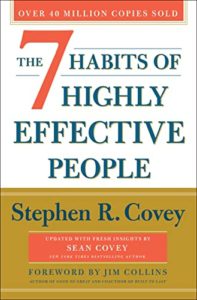
This sounds like something huge, but you can genuinely do this in a few hours if you focus on it. The second thing that comes from working this stuff out is absolute rock-solid confidence in your pricing, which you’ll never get from going, “I’ll charge a little bit more than so-and-so down the road.” You have got confidence in your pricing because you’ll know, Susie. One of the biggest issues in our industry is discounting. Everyone goes, “I’m going to come up with this price, but then I want to get some customers, so I’ll discount it.” Immediately there, you’re saying, “Here’s my price, but I can do it for a lot less.” That’s the message you’re sending out to your clients.
Doing that work with clients, sometimes we end up finding out that the pricing is pretty close to what they have got already, but we deliver the confidence in that pricing so that they know why they are charging it and back it up. The next time someone comes in and says, “So-and-so down the road is cheaper,” they have the confidence to go, “That’s fine. If you want to pay less, go and see them. The reason it’s more here is X, Y, Z.” The confidence that it gives in your pricing is almost as important as figuring it all out in the first place.
Like all business owners, I did the same thing. I realized I was losing $5 per service, which doesn’t sound like a lot until you times that by 300 clients and then you times that by four months a year. You’re losing $20,000, $30,000 or $40,000 a year by $5 and not knowing like, “I didn’t even know. I had $1 million business losing money.”
That extra $5, that’s all profit because this all goes on the top. You don’t lose bits of that. That’s all cherry on the top stuff. Getting your pricing right is absolutely the core and the fundamental thing. The number one thing that I do with nearly all my clients when they come to me is like this. Work on your pricing. I have had pushback. They are going, “I’m happy with that. I want to work on this over here.” I was like, “No, because if we get this right, everything else we do works better.”
What I love is, the formula is in any industry. It’s not just the beauty industry. It’s in any industry if you look at it because it is a best practice in all profitable businesses. It’s like, “Let’s use best practices to grow that business.” You also talked about getting stuff done because I know our busyness as entrepreneurs get in the way of our business. Let’s talk about that because you are crazy busy when I look at what you’re up to and what you’re doing in your podcast, business, coaching, family, kids, and the cat.
Getting stuff done is a huge thing. My dad, when I was younger, made redundant 40 plus. He started a business teaching people how to prioritize their time. He did a lot of research. That rubbed off and I became a little bit fascinated by this process. There are all these books out there on productivity, but all of them seem to be teaching you how to get more done. I realized we could cram stuff into our days. We can have tick lists, to-do lists and all sorts of stuff, but what’s more important is figuring out what are the most important things that we need to get done and focusing on those.
There are two things that I talk about here. Both of them are slightly stolen but reworked to make sense to people. The first one is a notion by Stephen Covey, who most people will know for writing The 7 Habits of Highly Effective People. In another one of his books, he talks about the notion of rocks. He talks about a glass jar and he says, “If everyone has different tasks and your big tasks, the ones that are going to move the needle, these are your big rocks. You have got your smaller little projects. Those are your smaller rocks and then you have got your day-to-day stuff, which is the sand.”
He said, “Most people want to get stuff ticked off their to-do list. They put the sand in first. It sits at the bottom of the jar.” They will be like, “I’ll do the next tasks because they are easy. I can get them done in a day or two,” so they put the little rocks in. What happens is there’s no room left for the big rocks. You need to do it the other way around. You put the big rocks in first. Get those planned in and worked on first and then the smaller rocks. The sand will find its way out in between all those things.
Even if there’s not enough room for all those day-to-day stuff or day-to-day bits, the sand isn’t going to be the thing that’s going to move the needle to get you to where you want to be. If it doesn’t get done, it doesn’t get done, but I would rather not get a day-to-day task done than one of my big goals for the year. That’s one of the key concepts I work on. The other end of that is simplifying the week-to-week. That is having a simple weekly process for yourself that starts at the beginning of the week and has a little process at the end of the week.
We have what we call weekly winnings. It starts on a Friday, which always confuses people. On a Friday, all you do is look back at your biggest three things that you did that week, what you’re most proud of that week, what you got done or what was a win that week, then you write those things down. You look at coming up to the next week, “What are the things that are going to move you towards those big rocks?” What three things are you going to do next week no matter what and amongst all the other things that you got to do as well?
From the way you look to the way you act to the language you use, you can be professional, but also have fun and be you while you’re doing it.
That becomes your overarching to-do list for the next week. You get to the Monday and then you go, “Let’s look at those three things. What am I going to do today that’s going to help me achieve one of those three things this week?” You simply do that each morning. That way, you’re not overloading your to-do lists. You’re not trying to do twenty things a day. All you’re trying to do is move closer to those three things that you promised yourself.
This does two things. One, it makes sure that you’re making progress each week. When you get to the end of the week, you have got that simple one-page log of what you did that week. You never get to the end of the week and you’re never like, “Where did that week go? What did I do? What happened? I know I was busy the whole time, but what was I doing?”
You have got it written down somewhere and you can go, “This week, I did this and this. I nailed all my things. I even got this other thing done as well.” It’s both things. It’s understanding the big picture in terms of the rocks but also having a straightforward and simple weekly process for yourself so that you know what you’re doing and what you did.
I love that because I always say, “If you focus on the big rocks, then I have more money to hire people to do the sand.” I have to check in with myself every day to go, “This is not the highest income-producing activity that I should be working on.” I’m constantly looking at, “This is somebody else’s job.” If I’m focused on the rocks and part of the rocks is sales, strategy and working on the business, I can then have more money because I’m focused on those things to hire those other people to help me do that stuff that I don’t want to do. That’s not fun for me. Business should be fun.
One of the other things I did was I had to put an organization called the UK Spa Association. Essentially, I’m responsible for all the spas in the UK. Traditionally, because we work with a lot of five-star hotels, which when you think of a lot of five-star hotels, you think three-piece suits and very smart things, I have tried to bring this ethos to the role of, “You can be very professional, but it doesn’t have to be boring and stuffy.”
I turn up to meetings. I don’t turn up in T-shirt and board shorts. Don’t get me wrong, but I’m like, “I don’t think anyone is paying me for how I show up in terms of the clothes that I wear. They are paying me for my knowledge and skills.” You don’t turn up scruffy, but I don’t think you have to look a certain way. From the way you look to the way you act to the language you use, you can be professional but also have fun and be you while you’re doing it.
I know that in that industry, it’s a different dress code than in a corporate setting. There is a uniform in every industry. Make sure that you’re following industry standards, whatever those are and work for you and your personality. I was trying so hard to be a man when I first started speaking because I wanted to be treated respectfully. I had short hair and I always wore a suit. I was like, “This is not fun for me. It’s not even me. I’m girly. I want to wear pink lipstick and fun blingy stuff.”
Genuinely, I still, to this day, put a suit on. I still feel like that kid who has borrowed his dad’s suit to go to the prom or something like that. It all feels a bit awkward and weird. Funnily enough, I had to go to an awards ceremony and I had to wear a black tie. I was like, “I haven’t worn a suit with a tie for ten years.” It was a very strange experience for me, but occasionally, it comes out. I never quite got comfortable in those clothes. If you see me speaking on stage now, it’s more than likely a shirt with no tie. It’s more about the knowledge and the words that I use and how I got there.

We have earned it to that certain level. I keep thinking, “Can I go back to high heels every day if I have to go back into speaking on stage?” I’m like, “I haven’t worn those in a couple of years.” Let’s talk about what does a business need to succeed or don’t work. What do you think are those fundamentals or foundations?
One of the things that we did over lockdown was we revamped a lot of this training that we do because we have always realized this. We identified certainly within the people that I work with three very distinct levels of businesses that we can help in a slightly different way each level. There are different things you need to focus on, depending on the level that you’re at in your business. It’s a weird thing to explain. They are all the same things, but you need to do different activities.
For me, the three things that you need to focus on all the time, first of all, we talked about price. You got to get your price right. Sales is the number one next important thing, and then it’s marketing. People always have an issue with me on this because they are like, “Marketing needs to come before sales.” I’m like, “You can get sales without doing the marketing. You have got to get those first few sales in place, and you can go out and speak to people you know.”
You don’t have to go out and spend loads of money on ads, marketing campaigns, sales funnels, and all these different things. Get the sales first. Make sure there’s a sales activity going on every day. Once you have got that dialed in, then the marketing comes in to bring in the leads that can go through that sales process. Having said that, it’s different at each level. When you’re starting out, you want to make sure your price is right and you’re doing things that are local level, speaking to people you know, leveraging all your own networks, and some basic marketing stuff.
That doesn’t mean going out and throwing money at Facebook ads or Google ads. You need to make sure that you have got the process in place so that when a few leads come in, they go through your sales process, they convert and you know the rate that they convert at. Once you know that, then you can go to the next level, which is, “We need maybe your review of prices because now you’re delivering a different scale.” You go, “Make sure the new price is working with our sales structure,” then you start throwing more at the marketing side of things and bringing in different channels.
Ultimately, they still go through that new sales process. When you go to scale, probably you have got teams of people doing this thing for you now. It’s the same three tasks but at a different level. For me, those are the three things. No matter what business you’re in and what you do, it’s got to be those three things in that order, price, sales, and marketing. As you said, everyone’s business is dysfunctional in some way, but if you got those three things nailed, then you can do a heck of a lot wrong as long as you got those things going.
At every level, we need to re-evaluate your pricing because your overhead is completely different than when you were a startup. People have been charging the same price for twenty years. I’m like, “You have one year of experience repeating it twenty times. You do not have twenty years of experience.” “They can’t figure out why I’m not making more money or why I’m not growing.” We’re not analyzing it. They are like, “I don’t want to poke it in your eye.”
Hire Adam or me. Hire someone that gets geeked out about that to give you the information because we’re losing so much money because we’re not getting the right information when you need it. That’s delicious. Let’s talk about your philosophy on business fundamentals because you talked about what we need to work, how to price our services, and getting stuff done. What are the key things that you think we need in place to grow a 7- or 8-figure business?
You need to make sure that you have a process in place so that when a few leads come in, they go through your sales process and convert.
It comes down to the same things in terms of the tools and things that you need in place. Everyone says this. You need a list and you got to have a list in place. It may fall out of fashion with a lot of people, but it’s got to be email. Get yourself an email list in place. I don’t care what platform you use. They are all much of a muchness. I have a preference, but as long as you’re catching people’s email addresses.
I don’t know if you agree with this or not, Susie. Social media is great, fast, fun, and exciting. Email has been getting a bashing because they are like, “Read rates are down.” There is physically no way that you’re going to get the same interaction level on social media that you can still get on email. Even if you’re doing a bad job, you’ll probably get into a 20% read rate on your emails. There’s no way you’re getting that on social media.
You got to have that backup of the emails in place so you can contact people on mass because that’s something that you control. A lot of people have said this as well, “Social media can disappear overnight. They can change the rules on you. You have no control over it.” At least with email, even if you’re probably old-school and you occasionally download it and keep it somewhere on a thumb drive, you have got that information. If you have got information to contact people, that is something you have. That’s what you own. That’s your asset. You can always start up.
I have often said, “If weirdly overnight aliens came down, stole your business, and took all your equipment but you were left, as long as you have your skills and your email list, you can start up the next day.” It’s pretty much based on that. The fundamentals is you got to have an email list in place. It’s a way to contact your clients, your people, and the people who are interested in you on mass at the drop of a hat.
The reality with social media is they are fans. They are not potential clients until they get on your list. There’s a different conversation you’re having. Social is social. You’re sharing business stuff and social stuff. Email is business, whatever your business is, whether it’s a salon and spa, coaching business or construction business, it doesn’t matter. They have raised their hand to say, “I want to have some interaction with you,” or they opt-out. I don’t care. I don’t want to send an email to somebody that doesn’t want my information. That’s part of the business.
I love it now when people unsubscribe. It used to freak me out. I’m like, “What did I do wrong? Someone unsubscribed.” Now, I’m like, “That’s another person that isn’t right for me that isn’t going to buy. Now, I don’t have to pay for them on my email list because I pay by the number of people who are on there. You saved me money. Thank you very much.”
Clean that list out. It doesn’t matter. I have worked with partners that have hundreds of thousands of people on their lists, but they are not real people. They are not interested. They are falling on deaf ears. I always tell my partners, “I’m small and mighty. I may not have hundreds and thousands, but I have got a quality list that takes action and listen.”
My problem is when I refer someone like, “We did a mailing for you for your podcast, book or membership site,” they will be like, “Do I hire Adam now?” I’m like, “I don’t know. Talk to him, get on his list and see what he wants. I’m mailing because I like him. I like what he stands for and there’s value.” That’s an exciting list when they are like, “What do I do? Do I need him now?” There are some people who say yes and then there are some people who say no, so segmenting your list is important as well.

Email the people who are interacting with you the most often and clean it. Don’t be afraid to get rid of people yourself because there are so many things. I attended a workshop. It was all about email deliverability and the complexities of these filters that are out there that will watch your emails and how you send them and who opens them. The fact is now, in a similar way to the algorithm that we have all heard about in terms of social, there are that kind of filters in place for email.
If these filters start to see you sending out all these emails to this massive list of people, half of which never read it, opened it, and respond to it, that’s going to lower your email score. You want to be cleaning it off because the more these systems see your emails arriving, people opening them, replying to them, and clicking on things, that’s going to help you reach more people. You need to be wary of that.
The next thing that you got to have is a CRM system or process. You got your email list. That’s the people that you’re messaging. It can be as simple as four columns on a Trello document or a simple process. You got to have some way of going, “I had a conversation with this person about what I do. I need to make a note for myself because they didn’t buy straight away, but they were interested. I’m going to move them over into the next column of interested people that I need to get back to.”
You need to write a note to yourself saying, “I’m going to check in with them in two weeks’ time or whatever it is,” because your brain will never remember all the conversations you have and you will lose potential clients because of it. I made this mistake for ages. I thought, “I’m a very personal person. I send out emails, talk online, and do a lot of videos on social. If someone wants to speak to me again, they’ll come and find me.” It turns out it’s not entirely true.
The second I started making a note to myself of, “I had a conversation with Susie. She was interested in this particular product, but she decided for whatever reason at this point, it’s not the right time,” I made a note to myself and scheduled a little follow-up in two weeks’ time. It popped up on my screen and I got, “Follow up with Susie.” “Thanks for getting in touch with me. I have been meaning to get in touch with you for a while, but I keep forgetting. Life gets in the way. I would love to come and buy your thing and work with you.” It’s unbelievable the difference that makes.
However simple that can be, you don’t need to go out and buy HubSpot or whatever CRM system is flavor of the day on YouTube. Have a simple process, however that works best for you at your level, it depends on the level you’re at. Maybe you need HubSpot for the number of leads and conversations you’re having. Have a simple process so that you can make a note. Remind yourself of what you said, what they were interested in and when you need to follow up and do it. It’s as simple as that. If you have those processes in place, guaranteed, you’re going to get more sales and clients.
Let’s talk about life lessons. We all have those life lessons. Some people call them failures or challenges. I call them life lessons. What has been one of your biggest failures? What did you learn from it? What was the biggest a-ha from it?
One of the biggest ones was not leaping when I knew I should have done. I got involved in a partnership with people and I liked those people. I had known them for some years. I stuck around in that business for way longer than I should have done because I didn’t want to let them down. I knew I didn’t want to be doing it. It wasn’t my thing, but I knew them. There were three of us in the business at that time. There were five of us, but there were three partners in the business.
You’ve only got so much time on this planet. Do the thing that’s right for you.
I felt that me going would leave them in the lurch. I didn’t say and did anything until it got to the point where I resented that business and them quite a bit. Eventually, I did leave and it turned out it was all fine. The world didn’t end. I feel that there were maybe three years there that I gave to a business that I should have walked away from. I should have listened to my gut. I should have gone and done the thing that I wanted to do and understood that it wasn’t selfish because that’s what it was.
I felt it was a very selfish thing to do. I was like, “I committed to these people to start this business.” What I should have done was to go, “I’m not enjoying this anymore for whatever reason it was. Either what can we do about it or is it okay if I step back and go do something else?” If I had done that three years earlier, I would have been so much further forward in a lot of other things that I had done. I would probably have been a lot happier for those three years than I was.
One of the big things is if something feels wrong in business or you have a passionate desire to do something else, make sure you’re not doing it for the right reasons on checking with yourself. Be willing to be selfish. It’s probably not selfish. You have only got so much time on this planet. Do the thing that’s right for you if it feels passionate or crazy to someone else but the right thing for you to do, do not be afraid to take that leap. I would rather regret something that I did than something that I didn’t do.
You’re speaking my language. It was only three years. I stayed seven years too long. I want to say that I don’t give up. I was like, “I committed on my word.” Oprah always says, when they ask her, “What would you do differently looking back?” She said, “I would listen to the whisper before it became a tsunami.” You listened. You were maybe not the least, but you were at the knock. I was at the tsunami going, “I am done. I have given my heart and soul.” That’s never a good place to live when you’re in that space. Adam, I love our conversation. I could go on and on. What is the one thing in your life you want to be remembered for?
I want to be remembered for helping people. I genuinely would like to know that there are people in the world that are better off because of something I created. I suppose people call it legacy. I would love to think that there was something I created that I can even leave behind after me that continues to help people. I would love it to be some amazing piece of art or something truly inspiring like that. I know it’s probably going to be Adam’s way of pricing treatments for maximum profit, which is not remotely sexy.
It’s profound. We can change our children’s life, their children’s life and your own life. That’s a legacy play if you get that one thing right.
Don’t get me wrong. I love having money, but the emails that I get from someone who has started out on their business and maybe supporting a child, and they send me an email saying, “For the first time, I hit my sales figures.” I had one from someone, and it touched me. When we were recording this, it was in December. They sent me a message saying, “For the first year this year, I can buy my child a Christmas present she wants because of how you helped me in this business.”
The only way that we can keep doing that is by charging what we’re worth. I want to add that little caveat. Do you have a favorite app or software that you use in your business that you cannot live without?
The one I use every single day has got to be my email and automation software called ActiveCampaign, which a lot of people will have heard of. I’ll be honest. It is not the best email software in terms of its editor. The editor is a bit clunky but in automation-wise, it’s a massive time-saver. I barely send an email myself now. Everything runs through there.

We have automated so much stuff. It saves a bucket load of time for me and offers a better service as well because when someone clicks on a thing that I have created, they get it straight away rather than having to wait for me. ActiveCampaign is where I spend the vast majority of my time in terms of the piece of software.
Adam, how do people get ahold of you? How can we keep in touch with you? Let us know how do we follow you.
You can stalk me very easily on most of the social media profiles. I’m @BeautyBusinessSecrets on Facebook and Instagram. On LinkedIn, I’m Adam Chatterley. On Pinterest, we are Beauty Business Secrets as well. Type that in any way. You’re going to find me. The podcast is The Beauty Business Podcast. You can find that in all good podcast applications and a few bad ones as well. It’s mainly on Apple, Spotify and Google. With a slightly unusual name like Chatterley, you pretty much type that in anywhere and you’ll find me somehow. You can find me that way.
Adam, thank you so much. I appreciate you. Do you have a way that we can play with you? You want to go to your website. How do we take advantage of that?
What I have decided to do for you, Susie, is I’m going to make one of my workshops free for you, guys. I don’t believe in doing discounts. I feel my prices are amazing value already. It’s one that we did that people seem to love. It’s the slightly underrated title of How To Earn Whatever You Want. This is a fifteen-minute workshop and I will teach you how to earn whatever you want in there. All you need to do is go to BeautyBusinessSecrets.co/Susie. You’ll find that there. We’ll put a few of the links and bits and pieces of goodies in there, too, for you.
If you love this episode, please like it and, more importantly, share it with somebody to make a difference. Our goal is you’re in business for yourself, not by yourself. I bring you my badass friends that are making a profound difference in the world to help you grow your business and influence and make a bigger impact in the world. I’m your partner in your business. Adam, thank you so much for your time and your generosity of your knowledge and expertise. We look forward to seeing you again.
Thank you, Susie.
Important Links
- The Beauty Business Podcast
- BeautyBusinessSecrets.co
- UK Spa Association
- The 7 Habits of Highly Effective People
- ActiveCampaign
- @BeautyBusinessSecrets – Facebook
- Instagram – Adam Chatterley
- Adam Chatterley – LinkedIn
- Apple Podcasts – The Beauty Business Podcast
- Spotify – Beauty Business Podcast
- Google Podcasts – The Beauty Business Podcast
- BeautyBusinessSecrets.co/Susie
- https://www.Facebook.com/adam.chatterley.9
- https://www.Facebook.com/groups/beautybusinesshackers
- https://www.YouTube.com/channel/UC0H8M8d9THU5XctJzX_m3fg
About Adam Chatterley

20+ Years working in the salon & spa industry in over 27 countries. Owned, consulted, supported, designed multiple businesses in this time. Founder of The Beauty Business Podcast and BeautyBusinessSecrets.co. Chairman of the UK Spa Association .
